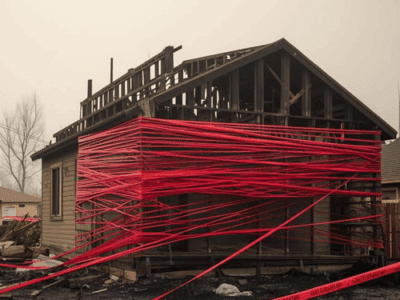Disaster Insurance
States (for wind) and the Feds (for water) provide insurance for hurricane victims. Here’s how.
Rebuilding takes money. That makes insurance a crucial part of the equation. Insured losses are expected to be in the $70 billion range for Harvey and Irma combined. This includes commercial insurance, but the payments for home owners will also be hefty. Those costs are generally covered by government-supported insurance markets.
I’ve posted previously about the federal flood insurance system. Basically, the system has three problems. First, rates are unrealistically low, sometimes because of explicit subsidies, sometimes because flood maps are out of date. Second, the system is underfunded and can’t cover major disasters like Hurricane Harvey, requiring repeated government bailouts. Finally, many people who need insurance don’t buy it. Either they underestimate the risk of a flood — especially if they haven’t been through a flood recently– or they figure the Feds will fund the recovery anyway.
Trump has proposed eliminating federal flood insurance for new houses, leaving them either to find private insurance (which doesn’t currently exist), go uncovered, or go unbuilt. That would have the desirable effect of removing an incentive for construction in flood zones. But there are some problems. New houses are more likely to be charged something approaching the true market price, since they aren’t entitled to grandfathered rates. Moreover, the deterrent won’t work if people think (perhaps not unreasonably) that Congress will appropriate disaster relief after a flood to help them rebuild. And some people may underestimate the risk they’re taking if they build. So from the point of view of discouraging building in risky areas, this proposal might or might not work.
The flood insurance program was set to expire on September 30 but has been extended to December 8, when more permanent legislation will be required. Maybe this year’s hurricane season will finally motivate Congress to fix the system. Maybe not.
With all its flaws, the flood insurance system remains crucial to recovery after major floods. But of course it only covers floods. What about wind damage?
Over a dozen coastal states from New York to Texas offer some kind of windstorm insurance, generally keyed to hurricanes. They generally have special deductibles for hurricane damage. Florida is the national leader in this area, as well as in mitigation of windstorm risks.
In Florida, the largest insurer in the state is the Florida Citizens Property Insurance Corporation, set up to serve the high risk pool. The current governor pushed private insurers to take up more of these policies, cutting Florida Citizens down to about a half million insured. That’s good for the state program, but may increase the risk that some of the state’s smaller and more poorly diversified insurers will have trouble meeting their obligations after a big storm like this one. To make private insurance available for most homeowners, Florida also established a reinsurance scheme, the Florida Hurricane Catastrophic Fund, which private insurers are required to use. If the fund runs out of money, there’s an assessment against all other insurance policies to make up the deficit. The fund is flush with funds right now, fortunately, with $17 billion (its maximum liability) in assets. The reason why the Fund is in such good shape is that we’ve had several quiet years in terms of hurricanes. Florida insurance law also contains a number of features designed to encourage (and sometimes mandate) precautions against wind damage.
The Florida system isn’t perfect. According to a February, 2017 research paper, the high risk fund has had problems since the Florida legislature intervened to keep rates low in 2007, and the reinsurance fund would be inadequate if the “big one’ hit — like a direct hit on Miami by a Cat 4 or Cat 5 — or if there were back-to-back years with major hurricanes. Moreover, major insurance companies are leery of the Florida market because regulators are reluctant to approve price increases. So the private market is heavily reliant on small companies that may not have the financial resources to handle a really big event. Still, Florida deserves credit for being the pathbreaker in this kind of disaster insurance.
Texas also has a windstorm insurance scheme of sorts. The private market is subject to regulation at the county level, which seems odd. Texas also has a Texas Windstorm Insurance Association as an insurer of last resort in coastal counties and parts of Harris County (where Houston is located). The fund was expected to have about $5 billion in funding for 2017, supposedly enough to cover the hundred-year storm. There’s also a Catastrophe Reserve Trust Fund, which basically consists of savings from years when premiums exceeded payout, providing some extra cushioning. But it’s not clear how the fund has determined what is a 100-year storm or projected losses from such a storm, which leaves me worried that the state could be caught flat-footed — especially since I doubt very much they’ve taken climate change into account.
This hurricane season will provide a good opportunity to see all these insurance schemes in action. We should learn a lot about how to improve them, although we may be learning it the hard way.
Reader Comments
One Reply to “Disaster Insurance”
Comments are closed.







The best insurance is to mitigate rising ocean temperatures from the Gulf Stream and the Atlantic Drift. Insurance and re-insurance pools cannot survive repeated 500 year events. Perhaps the disaster recovery insurance industry can learn from the auto industry and lobby for regulations that will reduce their losses. In the meantime, homeowners and businesses should take more responsibility and accountability for building or rebuilding in increasingly disaster-prone locations.